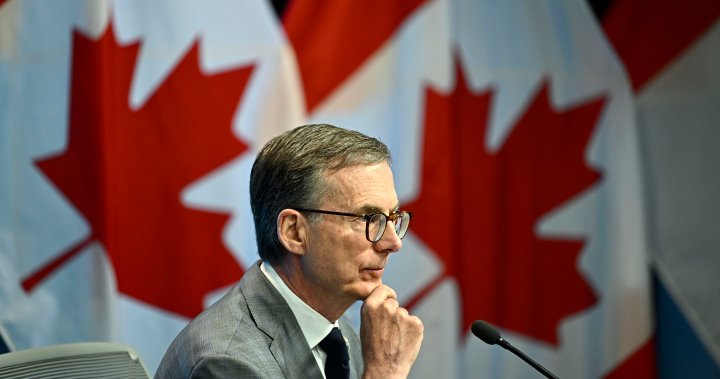The Bank of Canada’s Tiff Macklem says the path back to the central bank’s two per cent inflation target appears close to the coveted “soft landing,” but he also warns consequences of the cooling labour market have not been spread equally.
Macklem spoke about the health of Canada’s jobs market in a speech to the Winnipeg Chamber of Commerce on Monday afternoon.
His talk came a few weeks after the Bank of Canada delivered its first interest rate cut in more than four years, a major shift in monetary policy after more than two years of tightening that saw the Canadian economy slow.
As part of that cooldown, the unemployment rate rose to 6.2 per cent as of May, up from 4.8 per cent in July 2022 — the lowest point since at least the 1970s.
Rather than a correction that sees waves of Canadians losing their jobs, the rise in unemployment has come alongside a decline in vacancies and a rapidly growing population.
Inflation has come down too, last clocking in at 2.7 per cent in April with fresh data set to be released on Tuesday. Macklem said Monday that the economy appears to have enough “slack” where it can continue to add jobs without jeopardizing the path back to the two per cent inflation target.

“This is the soft-landing scenario. It has always been a narrow path, and we have yet to fully stick the landing,” he said.
The email you need for the day’s
top news stories from Canada and around the world.
“We are not yet back to two per cent, and we can’t rule out new bumps along the way. But increasingly, we look to be on our way.”
But Macklem also pointed out that while the overall labour force cooling has been “reasonably smooth” in aggregate, the data can mask worrying trends for some groups in the jobs market.
The unemployment rate for newcomers to Canada stood at 11.7 per cent in May, he noted, more than double that of the rest of the population (5.7 per cent).
It’s a similar situation for many Canadian youth, including new graduates. The unemployment rate stands at 12.7 per cent for those aged 15 to 24, well above the rate of 5.2 per cent among 25-to-54-year-olds and two percentage points higher than the pre-pandemic average for the group.
Because employers are hiring less in the slowdown, it’s harder for workers to find their first jobs, Macklem explained. That disproportionately hurts newcomers, young workers and recent graduates, and means the jobless rates here are rising much faster than the rest of the workforce who have more established careers.

“Integrating into the Canadian economy is becoming more difficult,” Macklem said of newcomers taking longer to find jobs. He said the federal government likely “has room” to slow the pace of growth in non-permanent residents without driving labour shortages.
Macklem conceded that labour market adjustments are “never evenly distributed,” adding that the Bank of Canada’s policy rate can’t target “specific parts” of the workforce.
“But the slowdown in hiring has led to increases in unemployment for younger workers and newcomers to Canada. These workers are feeling the effects of slower growth more than others, and we need to recognize this,” he said.
Are you a new graduate, young Canadian or newcomer struggling to find an entry-level or summer job? Use the contact form below to share your story, and we may be in touch for future articles.
© 2024 Global News, a division of Corus Entertainment Inc.




